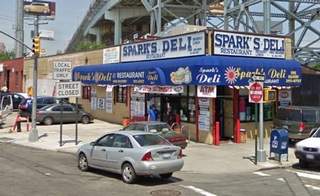The New York City health department unveiled a new Web site today to go along with the beginning of its A-B-C restaurant inspection disclosure system of more than 24,000 restaurants in the five (1).jpg) boroughs.
boroughs.
Daniel Kass, a deputy commissioner, told The New York Times,
“There is no shortage of sources of information on restaurants, but there is no other central source to find information about restaurants’ hygiene practices. We hope that this Web site will help spread the food safety message.”
The Web site displays restaurants’ current A, B or C letter grades and the specifics of their violations, and is designed to allow searches by restaurants’ first names or even first letters, by letter grades in specific ZIP codes, by boroughs and by dates of inspection. It also offers maps of restaurants’ locations, and Google street views of the restaurants’ exteriors.
John La Duca, the department’s director of online editing said a widget on the home page will permit readers to type in restaurants’ names for their latest inspection results. This widget can be installed on other Web sites or home pages — for example, on the Zagat Survey’s online version, or on bloggers’ sites, or Facebook and other social media platforms — to permit quick access to the inspection ratings from places other than the department’s home page.
Inspection results on the site were formerly updated weekly, Mr. Kass said. “Now, in most cases, it will be updated daily, when it is uploaded overnight from the inspectors’ hand-helds,” he said, referring to the portable computers in which inspectors enter restaurants’ cleanliness scores.
Associated Press commemorated the beginning of the new letter grades by recycling old arguments – the same ones heard when Los Angeles started it’s a-B-C system in 1998 and Toronto started its red-yellow-green system in 2002.
Robert Bookman, a lawyer for the New York State Restaurant Association, which vehemently opposes the letter grades, said,
"Some will undoubtedly close if they get a B or a C."
Others say they accept the new system and will strive for an A.
David Chang, whose hotter-than-hot restaurants include Momofuku Noodle Bar and Momofuku Ko, said,
"It is our goal always to get an A," said. "If we don’t get an A, we fail."
Chang said he has sent his sous chefs to city Health Department workshops to get up to speed on the new system.
That’s a much better approach. The best restaurants will not only embrace the letter grades and provide critiques to improve the system, they will brag and promote their A grades. It’s a form of marketing food safety, which helps enhance the overall culture of food safety.
Madelyn Alfano, who owns nine Maria’s Italian Kitchen restaurants, said Los Angeles restaurateurs still are not fond of the system, adding,
(1).jpg) "If you don’t have hand towels in your restroom that’s points off. We don’t like it but we’ve learned to live with it."
"If you don’t have hand towels in your restroom that’s points off. We don’t like it but we’ve learned to live with it."
That’s because paper towels should always be available. And what about a sticker on the dispenser that says,
“No towels? Please tell a server immediately. Yours in hand cleanliness, the owners.”
I just made that up.
Larry Michael, head of food protection for North Carolina’s Department of Environment and Natural Resources, said letter grade systems also are in effect in North and South Carolina, and the system works well, adding,
"Consumers really pay attention to the rating cards. The A, B, C system is familiar and it’s easy to interpret."
For those still wondering, here’s a review paper discussing the pros and cons of disclosure systems.
Filion, K. and Powell, D.A. 2009. The use of restaurant inspection disclosure systems as a means of communicating food safety information. Journal of Foodservice 20: 287-297.
Abstract?
The World Health Organization estimates that up to 30% of individuals in developed countries become ill from food or water each year. Up to 70% of these illnesses are estimated to be linked to food prepared at foodservice establishments. Consumer confidence in the safety of food prepared in restaurants is fragile, varying significantly from year to year, with many consumers attributing foodborne illness to foodservice. One of the key drivers of restaurant choice is consumer perception of the hygiene of a restaurant. Restaurant hygiene information is something consumers desire, and when available, may use to make dining decisions.
 Restaurants and food trucks would have a year to comply after the launch of the letter-grade system being developed for restaurants citywide, though the grades would be available on the city’s website.
Restaurants and food trucks would have a year to comply after the launch of the letter-grade system being developed for restaurants citywide, though the grades would be available on the city’s website.

.jpg) and maintain quality and safety of food and upgrade food handling establishments.
and maintain quality and safety of food and upgrade food handling establishments.
 suggested cards placed at a premises’ principle entrance, at eye level, and unobscured by other signage or menus was key in attracting initial consumer attention.
suggested cards placed at a premises’ principle entrance, at eye level, and unobscured by other signage or menus was key in attracting initial consumer attention..jpg) Avenue pizzeria, at 11th Street.
Avenue pizzeria, at 11th Street. .png) preparation surfaces and not keeping cold foods cold enough, records show.
preparation surfaces and not keeping cold foods cold enough, records show. an A, from a liberal sprinkling in Chinatown to a true sanito-palooza of nine blue A placards in the food court at Grand Central Terminal.
an A, from a liberal sprinkling in Chinatown to a true sanito-palooza of nine blue A placards in the food court at Grand Central Terminal. as a C.
as a C. Committee: to require food establishments to “post the most current inspection scorecard in a window or other locations visible to the public.”
Committee: to require food establishments to “post the most current inspection scorecard in a window or other locations visible to the public.” Crain’s New York Business (photo from Crain’s) reports the agency is holding a press conference Wednesday morning at Spark’s Deli on 2831 Borden Ave., where health commissioner Dr. Thomas Farley will laud the small business’s accomplishment.
Crain’s New York Business (photo from Crain’s) reports the agency is holding a press conference Wednesday morning at Spark’s Deli on 2831 Borden Ave., where health commissioner Dr. Thomas Farley will laud the small business’s accomplishment..story.jpg)
(1).jpg) boroughs.
boroughs.(1).jpg) "If you don’t have hand towels in your restroom that’s points off. We don’t like it but we’ve learned to live with it."
"If you don’t have hand towels in your restroom that’s points off. We don’t like it but we’ve learned to live with it.".png) Officials estimate that about 6,000 of the city’s 24,000 eateries had enough violation points in June to have earned the lowest mark on a three-letter rating scale devised by the city.
Officials estimate that about 6,000 of the city’s 24,000 eateries had enough violation points in June to have earned the lowest mark on a three-letter rating scale devised by the city.